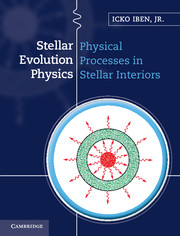Book contents
- Frontmatter
- Contents
- Preface
- Part I Introduction and overview
- 1 Qualitative description of single and binary star evolution
- 2 Quantitative foundations of stellar evolution theory
- Part II Basic physical processes in stellar interiors
- Part III Pre-main sequence, main sequence, and shell hydrogen-burning evolution of single stars
- Index
- References
1 - Qualitative description of single and binary star evolution
from Part I - Introduction and overview
Published online by Cambridge University Press: 05 December 2012
- Frontmatter
- Contents
- Preface
- Part I Introduction and overview
- 1 Qualitative description of single and binary star evolution
- 2 Quantitative foundations of stellar evolution theory
- Part II Basic physical processes in stellar interiors
- Part III Pre-main sequence, main sequence, and shell hydrogen-burning evolution of single stars
- Index
- References
Summary
Although locally conspicuous, stars are but one of many forms in which matter and energy in the Universe can manifest themselves; and there is a continuous interaction between these other forms and the stars. Stars are made out of diffuse interstellar matter that gathers itself into the condensations seen as giant molecular clouds; the stars lose mass as they evolve, returning to the interstellar medium material which they have enriched in heavy elements, thus causing a gradual change in the composition and cooling characteristics of the interstellar medium. Radiation from the stars interacts with interstellar matter in the immediate environment, changing the thermodynamic characteristics of this matter. Ejection at high velocity of stellar envelope material, such as occurs in supernova explosions, makes another important contribution to the energetic of the interstellar medium. The change in the composition, thermodynamic, and dynamical characteristics of the interstellar medium then alters the character and dynamics of the star formation process. Thus, although one may concentrate on the evolutionary behavior of stars as if they were isolated entities, stars are actually in a state of interaction with their environment, both feeding and feeding upon the matter in this environment. There is, however, a degree of asymmetry in the interaction. Although one cannot understand the evolution of the interstellar medium without taking into account the influence of stars, one can understand the evolution of a star without worrying about how it was made. Thus, in this book, stars are viewed as more or less isolated entities, their existence being accepted as a given and the circumstances that lead to their formation being examined only to the extent that they offer insight as to an appropriate initial configuration with which to begin evolutionary model calculations.
- Type
- Chapter
- Information
- Stellar Evolution Physics , pp. 3 - 29Publisher: Cambridge University PressPrint publication year: 2012



